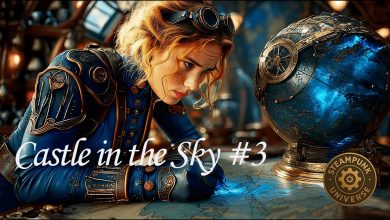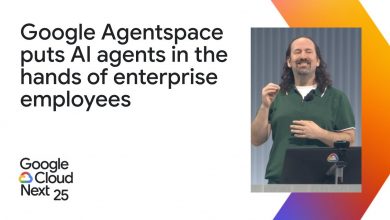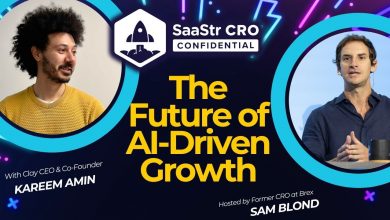How Long Before Entire Hollywood Movies are AI Generated?
Experts estimate that within 5–10 years (by 2030–2035), advancements in computational power, model efficiency, and narrative AI could enable the creation of full length films.
 AI video tools like Google’s Veo 3 and Runway can now generate scenes that look almost indistinguishable from reality.
AI video tools like Google’s Veo 3 and Runway can now generate scenes that look almost indistinguishable from reality.
WSJ’s Joanna Stern and Jarrard Cole put them to the test in a short film made almost entirely with AI.
Watch the full film and then see exactly how they pulled it off.
Veo 3
Google’s Veo 3, developed by Google DeepMind and announced at Google I/O 2025, is an advanced AI-powered video generation model that transforms text or image prompts into high-definition videos with synchronized audio, including dialogue, ambient sounds, and background music.
Unlike its predecessor, Veo 2, and competitors like OpenAI’s Sora, Veo 3 integrates native audio generation, producing lifelike clips that adhere closely to real-world physics, offer accurate lip-syncing, and maintain frame-by-frame consistency. It supports video resolutions up to 1080p and durations over 60 seconds, excelling in cinematic storytelling with precise camera control (e.g., rotations, dollies, zooms) and character consistency through its “Ingredients” feature, which allows users to define reusable visual elements.
Veo 3 is accessible in the U.S. through Google’s AI Ultra plan ($249.99/month, discounted to $124.99 for the first three months), providing 12,500 monthly credits (150 credits per 8-second video generation). It’s integrated into Flow, Google’s AI filmmaking tool, which combines Veo 3 with Gemini (for language processing) and Imagen (for image generation) to create cohesive scenes. Flow enables precise control over camera angles, transitions, and narrative elements, targeting filmmakers, educators, and marketers. Access has expanded to 73 countries, including the UK, with limited trial generations for AI Pro subscribers via the Gemini app.
Key strengths include its ability to handle complex prompts, such as a “paper boat navigating a rain-filled gutter” or a “stand-up comedian performing with audience laughter,” delivering hyper-realistic results that have gone viral on platforms like X and YouTube. However, limitations exist: complex multi-character scenes may lack narrative coherence, and some features (e.g., certain camera movements) revert to Veo 2, which lacks audio. The interface can feel unintuitive, with occasional bugs like session timeouts. The high cost and restricted access have sparked criticism, potentially limiting adoption by solo creators.
Ethical concerns surround Veo 3’s potential for deepfakes and misinformation, as its realism blurs the line between fact and fiction. Google mitigates this with SynthID watermarks and a SynthID Detector for identifying AI-generated content, though their effectiveness depends on widespread adoption. Critics also highlight risks to creative industries, with estimates suggesting AI could disrupt over 100,000 U.S. film and animation jobs by 2026. While Google emphasizes partnerships with filmmakers like Darren Aronofsky to augment creativity, debates persist about authorship and the impact on traditional filmmaking roles.
Conclusion
The question of when entire Hollywood movies will be fully AI-generated hinges on technological, economic, and cultural factors. Veo 3’s capabilities—producing hyper-realistic, audio-synced videos with precise cinematic control—mark a significant leap toward this future. Current AI tools can generate short, high-quality clips, but challenges like narrative coherence in multi-character scenes and the high cost of advanced models (e.g., Veo 3’s $249.99/month plan) limit their ability to produce feature-length films.
Experts estimate that within 5–10 years (by 2030–2035), advancements in computational power, model efficiency, and narrative AI could enable the creation of 90-minute films, especially for genres like animation or action with simpler storytelling. However, complex dramas requiring nuanced character development and emotional depth may take longer, potentially 15–20 years (2040–2045), due to the need for AI to master long-form storytelling and cultural nuance.
Economically, AI-generated films could drastically reduce production costs—Hollywood’s average blockbuster budget is $100–200 million—making them attractive to studios. Yet, cultural resistance from audiences valuing human creativity and concerns over job losses (e.g., 100,000+ U.S. jobs at risk by 2026) may slow adoption. Ethical issues, like deepfake misuse, and regulatory hurdles could further delay widespread use unless robust safeguards like Google’s SynthID become standard.
While Veo 3 and tools like Flow suggest a future where AI augments or even replaces traditional filmmaking, human oversight and creative input will likely remain integral for decades, with fully AI-generated Hollywood films becoming mainstream only when technology, cost, and public acceptance align, likely in the 2030s or beyond.



